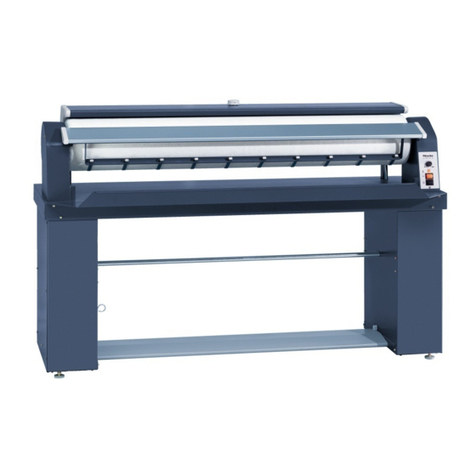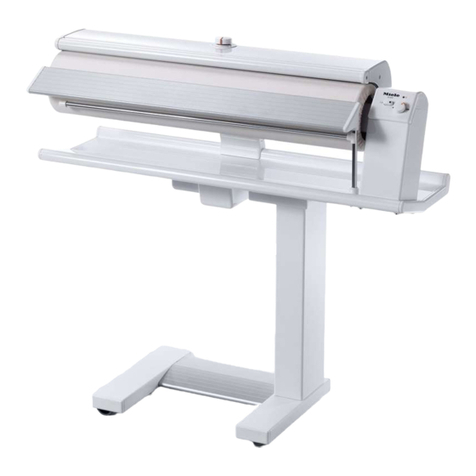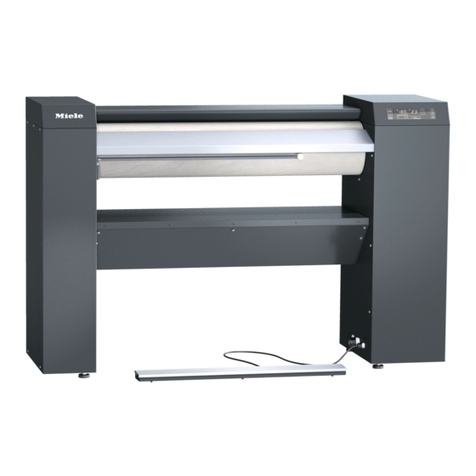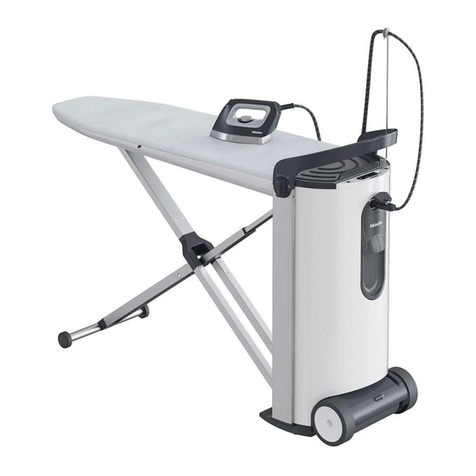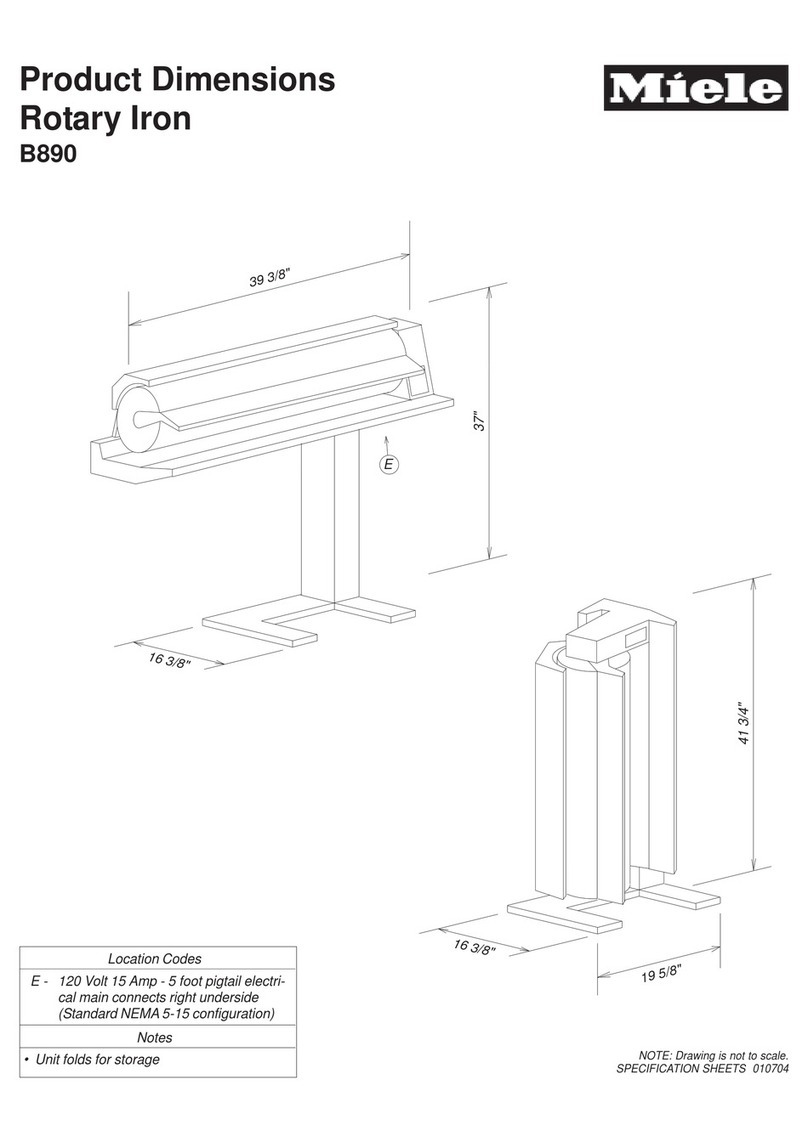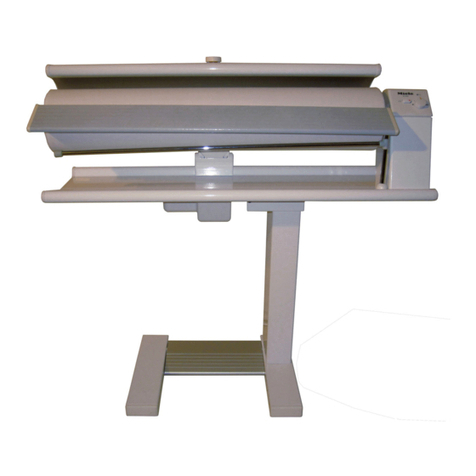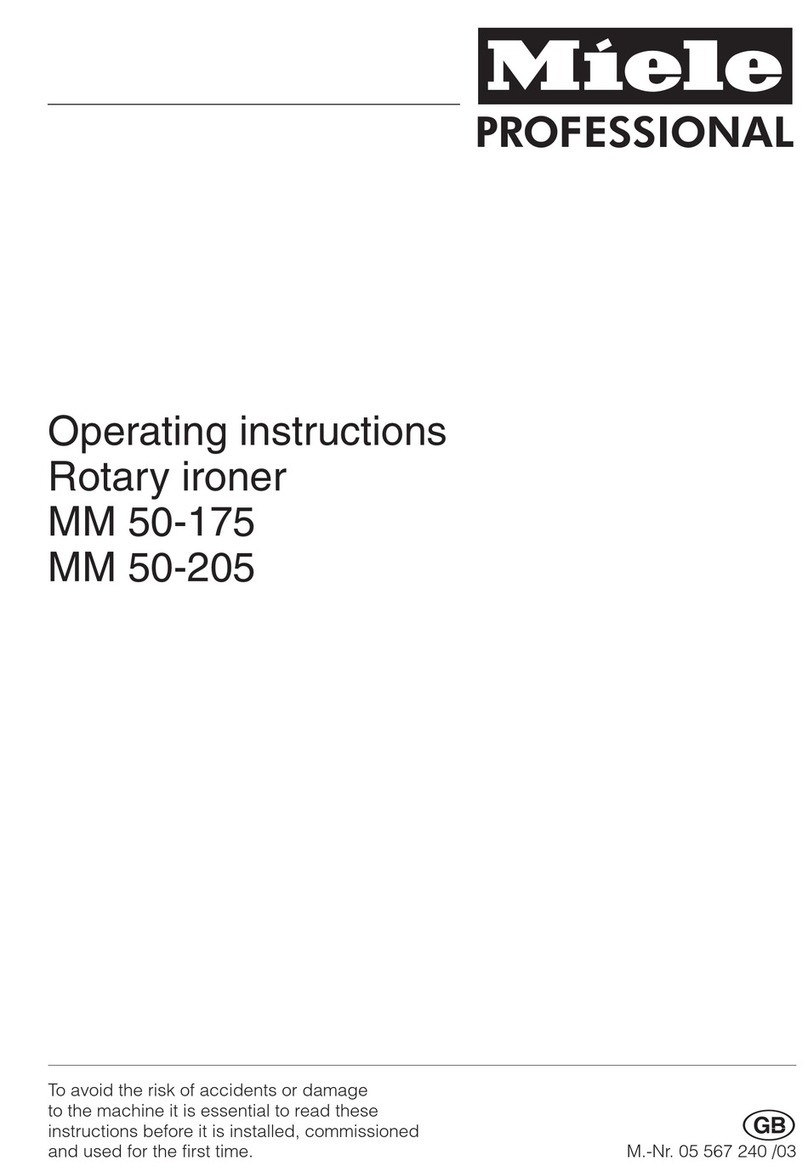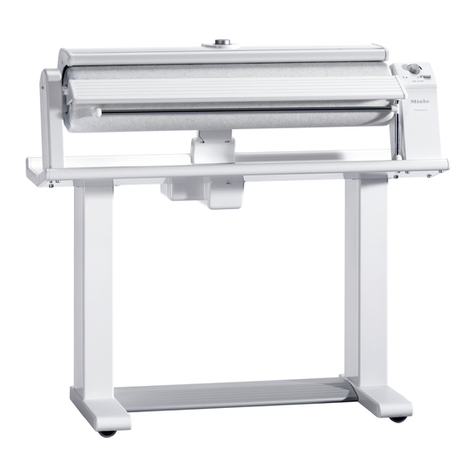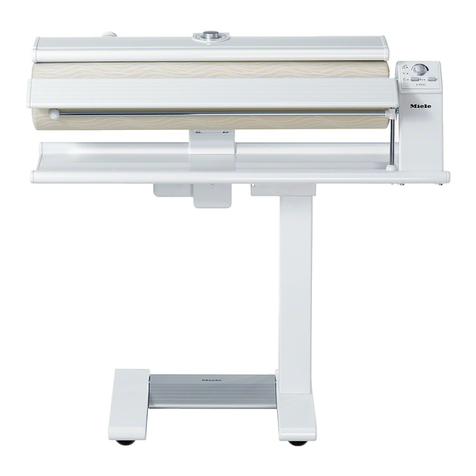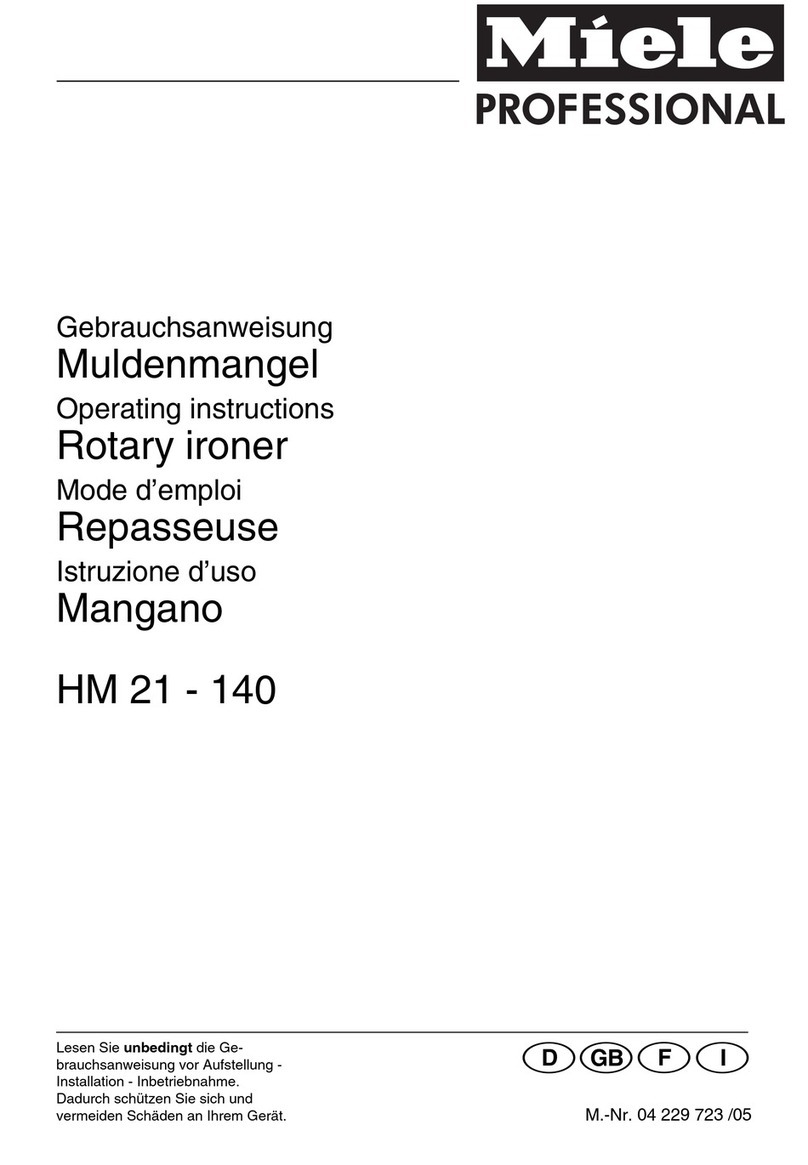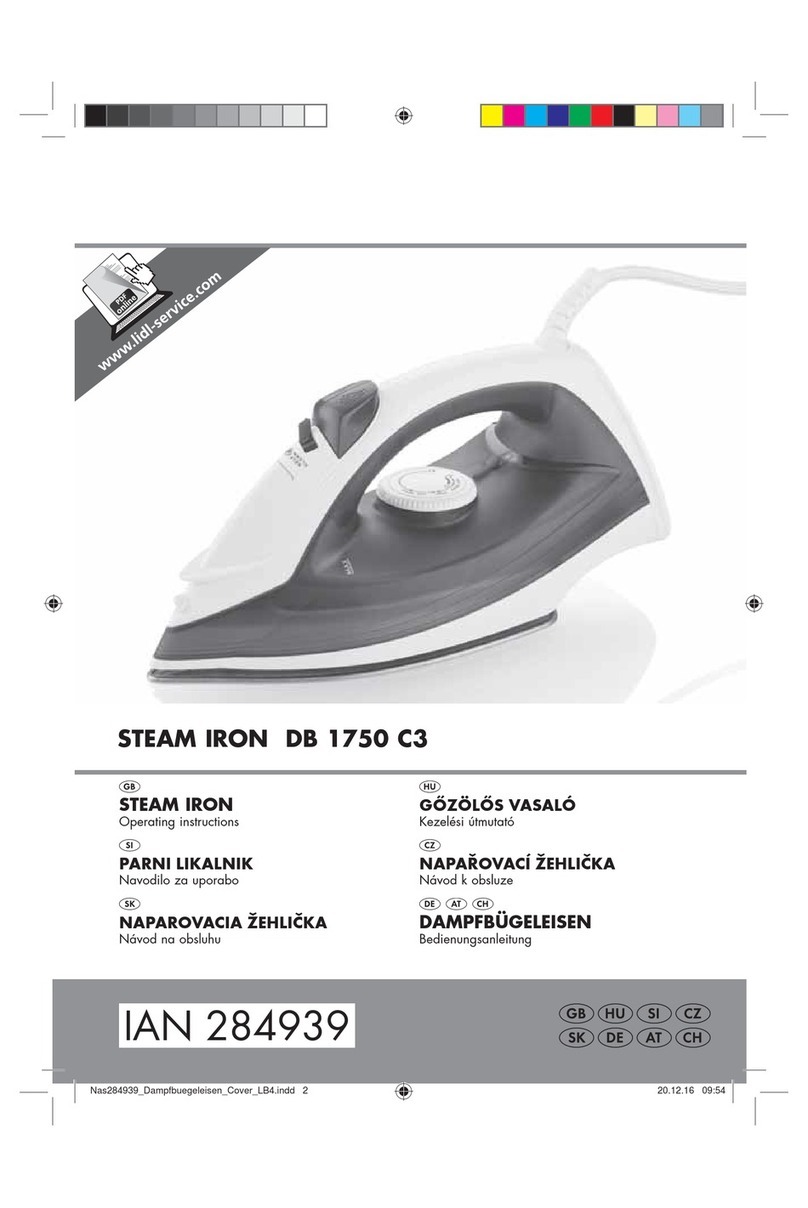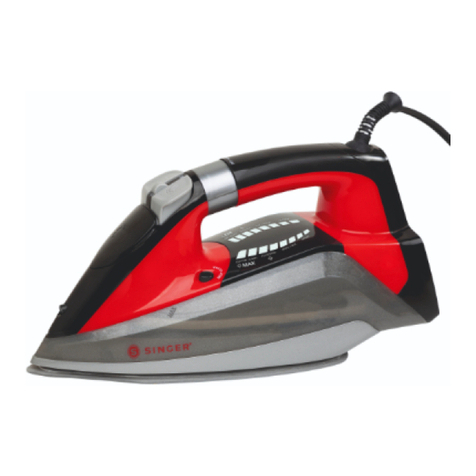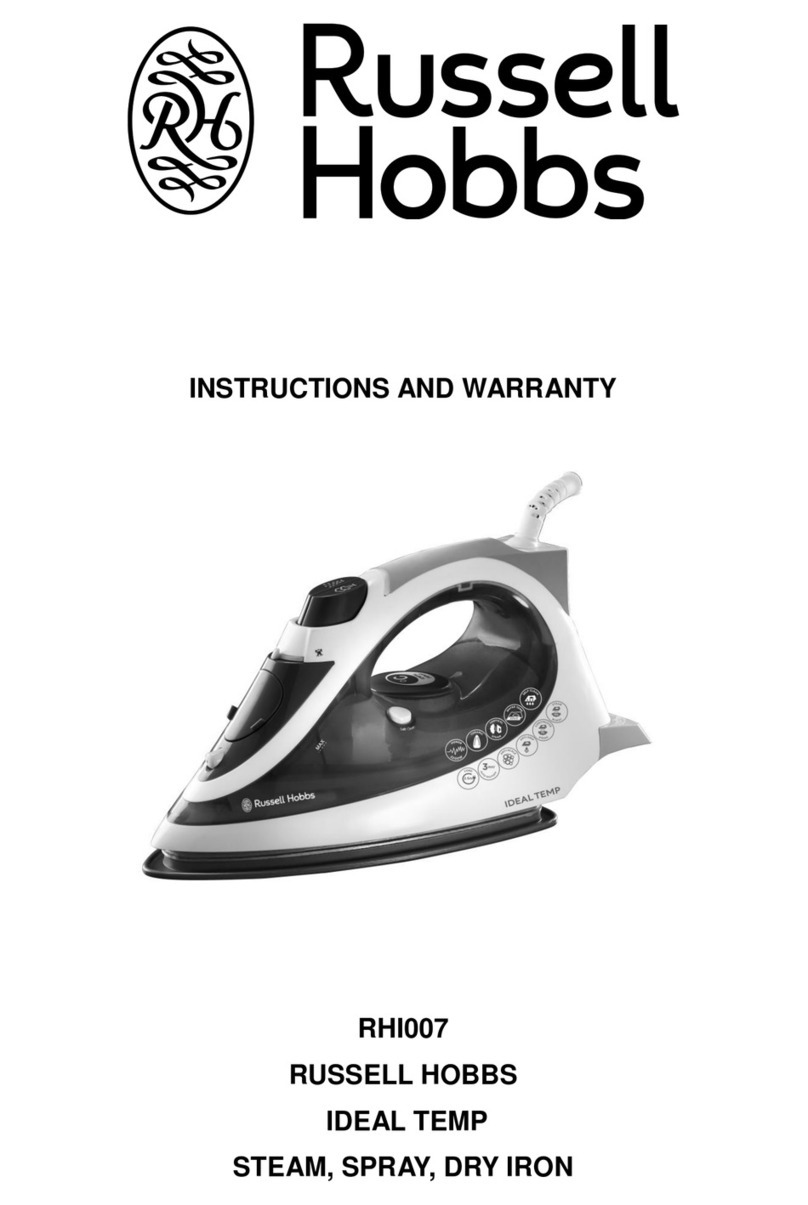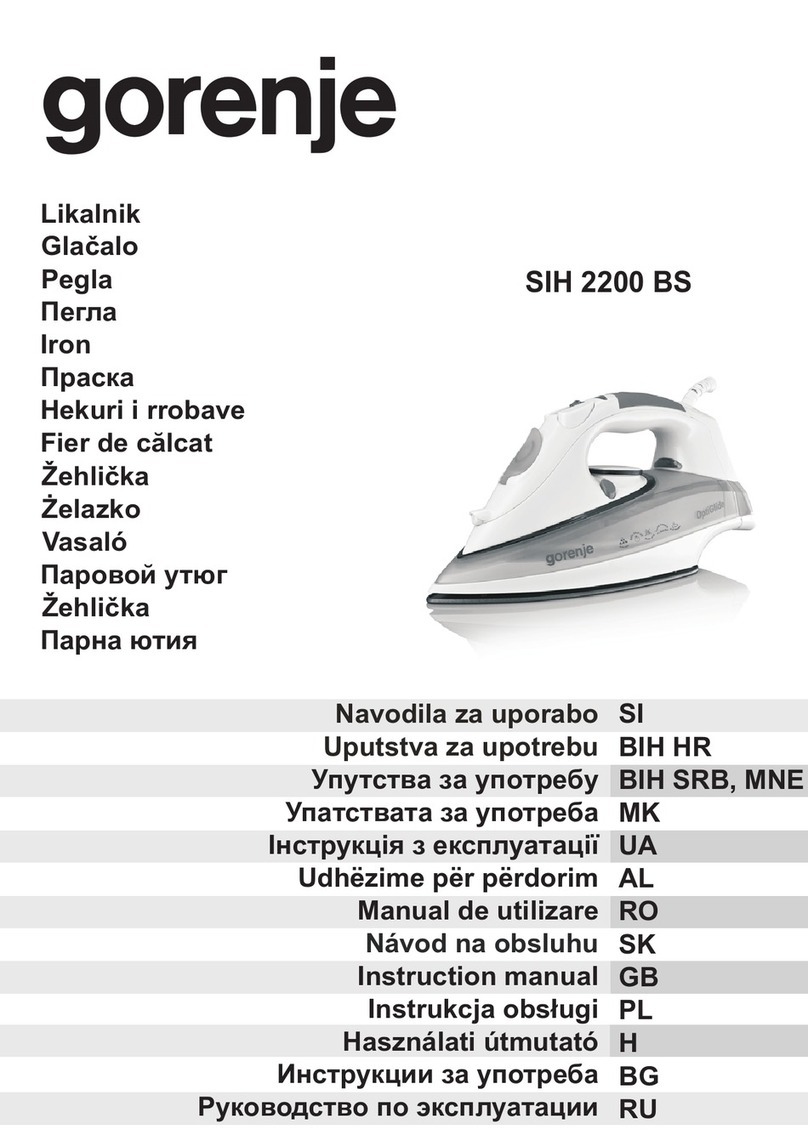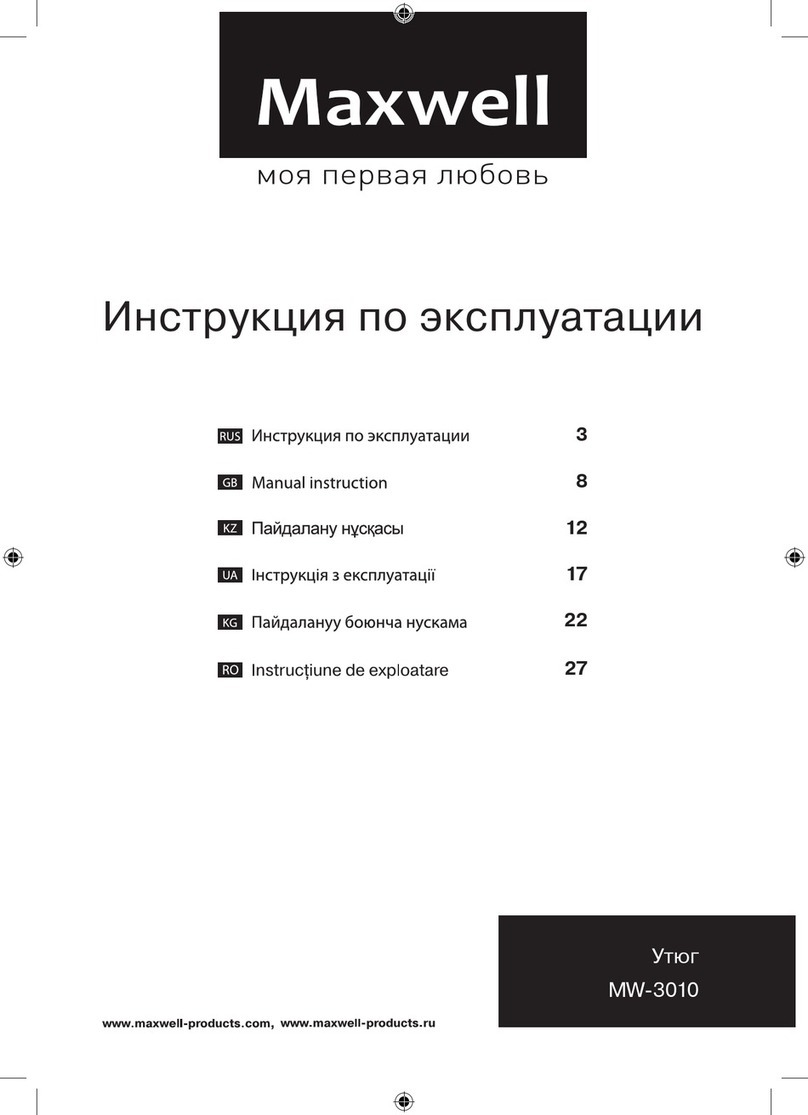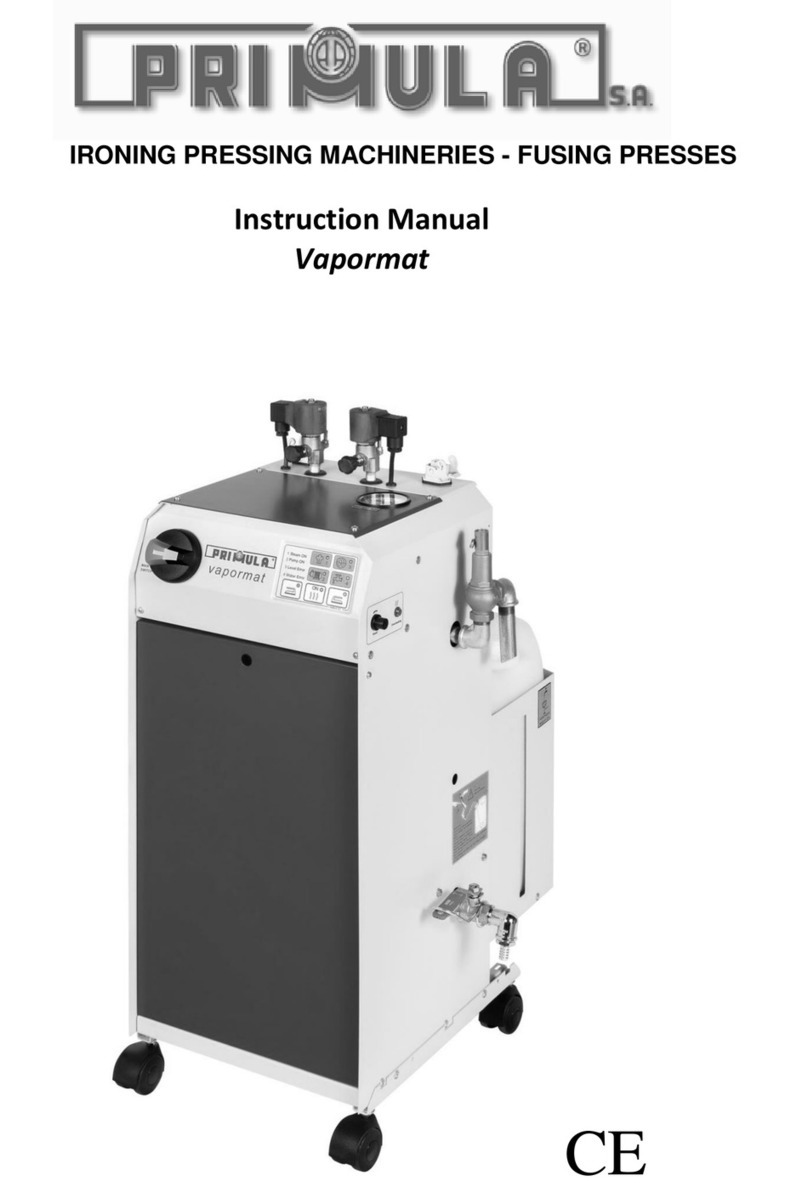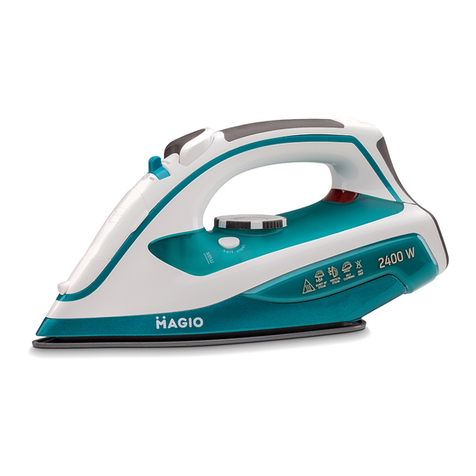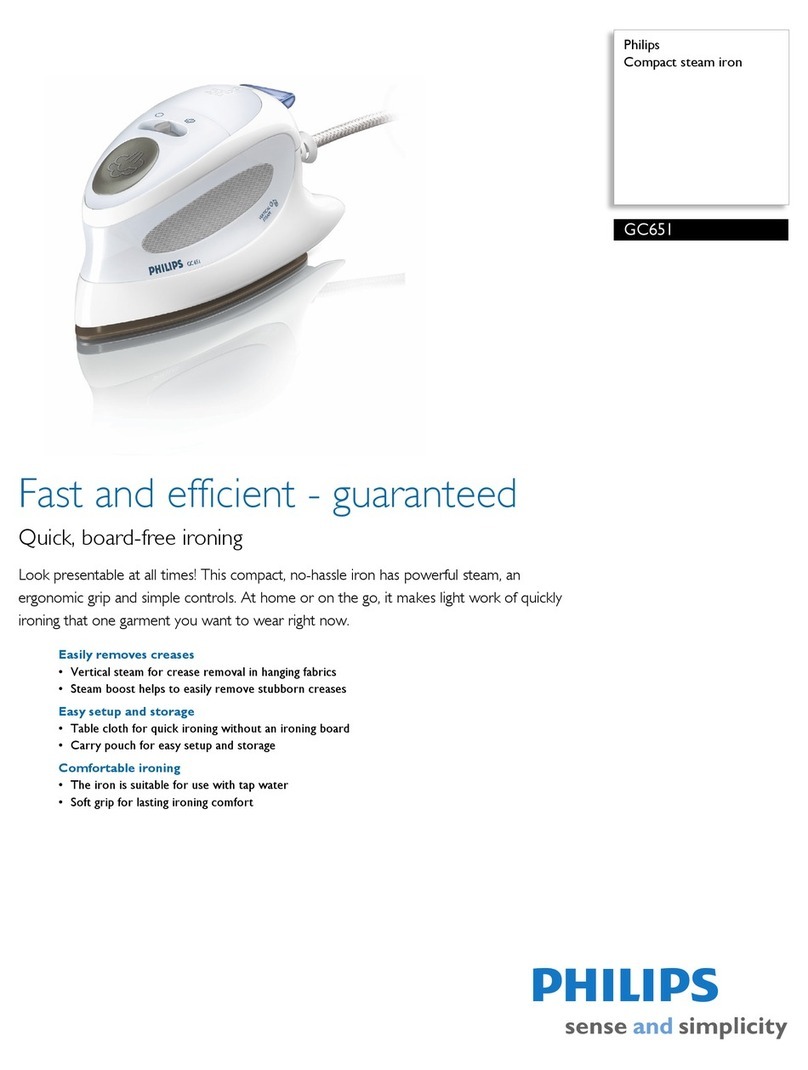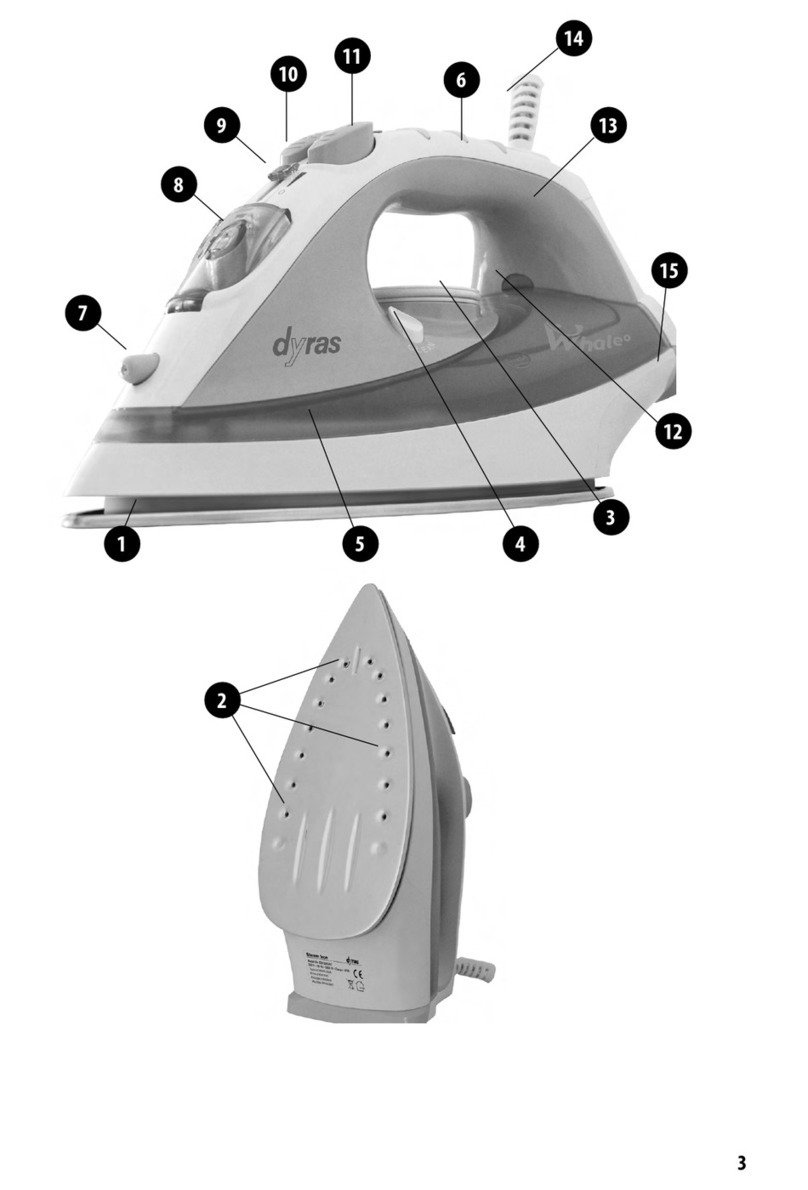To avoid the risk of accidents or
damage to the appliance it is
essential to read these instructions
carefully before installing and using
it for the first time. They contain
important information on its safety,
use and maintenance.
Keep these instructions in a safe
place for reference, and pass them
on to any future user.
Appropriate use
This rotary ironer is intended
exclusively for ironing textiles
which are suitable for machine ironing
and which have been washed in water.
Technical and electrical safety
Before setting up the appliance,
check it for any externally visible
damage.
Do not install and use a damaged
appliance.
A damaged appliance is
dangerous. Switch off at the mains
and call the Service Department for
assistance.
Before connecting the appliance,
ensure that the connection data on
the data plate (fusing, voltage and
frequency) match the mains electricity
supply. If in any doubt, consult a
qualified electrician.
The electrical safety of this
appliance can only be guaranteed
when continuity is complete between
the appliance and an effective earthing
system which complies with local and
national safety regulations.
It is most important that this basic
safety requirement is regularly tested
by a qualified electrician.
The manufacturer cannot be held
responsible for the consequences of an
inadequate earthing system.
The appliance is built in
accordance with current safety
requirements. Unauthorised repairs
could result in unforeseen dangers for
the user, for which the manufacturer
cannot accept responsibility. Repairs
should only be undertaken by a Miele
approved engineer.
Ensure current is not supplied to the
appliance while maintenance or repair
work is being carried out.
Faulty components must only be
exchanged for Miele original spare
parts. Only when these parts are fitted
can the safety standards of the
appliance be guaranteed.
The appliance is only completely
isolated from the electricity supply
when:
–it is switched off at the wall socket
and the plug is withdrawn, or
–it is switched off at the mains, or
–the mains fuse is withdrawn.
Warning and safety instructions
4
